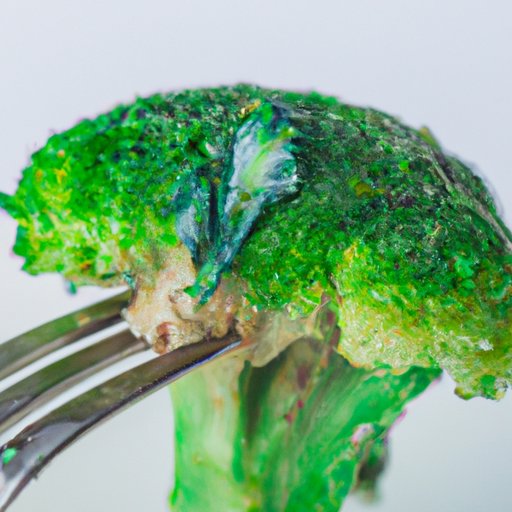
I. Introduction
Have you ever encountered a situation where the broccoli you purchased for your salad or stir fry has gone bad quickly and you’re not sure when to throw it out? Knowing when your broccoli has gone bad is crucial, as consuming spoiled broccoli can lead to various health issues, such as food poisoning. Therefore, in this article, we will highlight five easy methods to determine if your broccoli is still good to eat and provide helpful insights into how to identify bad broccoli.
II. 5 Easy Methods to Determine if Your Broccoli is Still Good to Eat
Here are five easy ways to determine whether your broccoli is still good for consumption:
1. Checking the Expiration Date or Purchase Date
It is crucial to check the expiration date or the purchase date of broccoli before purchasing or consuming it. If the date has passed, you should refrain from consuming it as the freshness cannot be guaranteed, and it increases the risk of food poisoning.
2. Assessing the Appearance of the Broccoli
Visual inspection can help determine the freshness of the broccoli and whether it’s still good to eat. You should look for broccoli with bright green or dark green florets and firm stalks. If the florets are turning yellow or the stalks are becoming soft or discolored, it is best to dispose of the broccoli.
3. Examining the Stem and Florets
The stem and florets should be firm to the touch. If they are soft or spongy, it is an indication that the broccoli is no longer fresh and should not be consumed. The stems and florets should be tightly packed and show no signs of wilting or bending.
4. Testing the Texture of the Broccoli
Testing the texture is an excellent way to determine whether broccoli is still good to eat or not. If the texture is slimy or mushy, it is a clear indication that it has started to spoil and should be disposed of immediately.
5. Conducting a Smell Test
The smell test can be useful in determining if your broccoli has gone bad. If your broccoli smells sour, it could indicate fermentation, and if it smells putrid, it could indicate that it has started to rot. In both cases, it is best to avoid consumption and dispose of the broccoli.
III. Broccoli Inspection 101: How to Recognize Spoiled Vegetables
There are several signs to look out for to recognize spoiled broccoli. These include:
– Wilting or yellowing of the florets and leaves
– Black or brown spots on the florets and leaves
– Slimy texture
– Mold or mildew on the surface
– Unpleasant odor
– Discolored stems
You can prevent broccoli from spoiling quickly by storing it in a perforated plastic bag in the refrigerator’s crisper drawer. Make sure you don’t wash the broccoli before storing it as the excess moisture can lead to spoilage.
IV. The Ultimate Guide to Identifying Bad Broccoli: Simple Tricks to Know
There are various factors that can affect broccoli freshness, such as the cultivation location and the season. Here are some tips on identifying and selecting good broccoli:
– Look for firm stalks with no brown or soft spots.
– The florets should be tightly packed and have a bright green or dark green color.
– Avoid buying broccoli with wilted leaves or brownish florets.
V. Why Your Broccoli Smells Funky: Signs that It’s Time to Toss It Out
Smell is a significant factor in determining spoiled broccoli. Here are some distinct smells you might notice:
– A sour odor indicates fermentation
– A musty odor indicates mold growth
– A rancid odor indicates that the broccoli has started to rot
To avoid any adverse smell, store broccoli properly and in a well-ventilated area. Also, avoid storing it with other pungent foods.
VI. From Texture to Color: Top Techniques to Check the Freshness of Your Broccoli
It’s essential to check both texture and appearance to ensure broccoli freshness. You can use these techniques:
– Look for broccoli with tight florets and firm stalks
– The color of the broccoli should have bright green or dark green florets.
– There are different types of broccoli, such as broccolini or romanesco. Familiarize yourself with the different varieties to recognize and select good broccoli.
VII. Conclusion
Inspecting your broccoli before consumption is essential to avoid any health risks associated with consuming spoiled food. We covered five easy methods you can use to determine if your broccoli is still good to eat, such as checking the appearance, texture, and smell. Moreover, we discussed specific signs to avoid when choosing broccoli and tips for preventing spoilage. With these insights, you can easily identify if your broccoli has gone bad and avoid any negative consequences of consuming bad broccoli.
Remember, maintaining food safety and a healthy diet should always be a priority.




